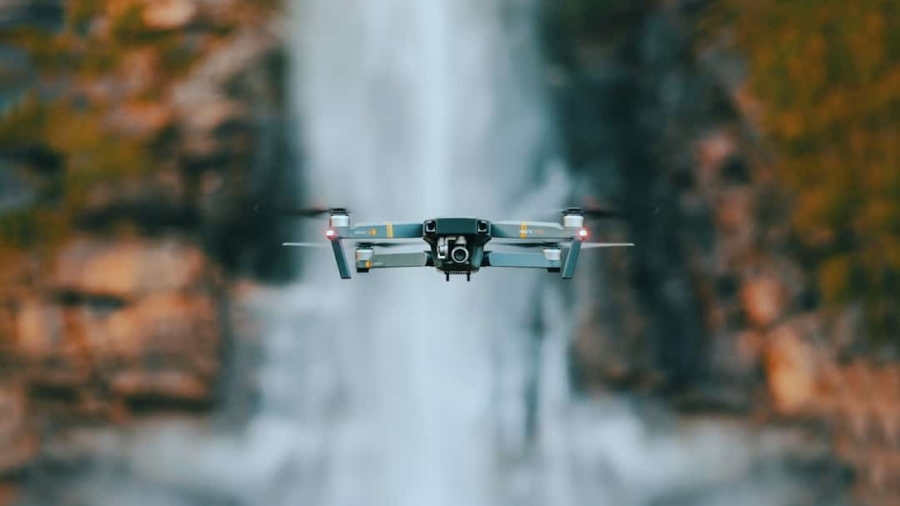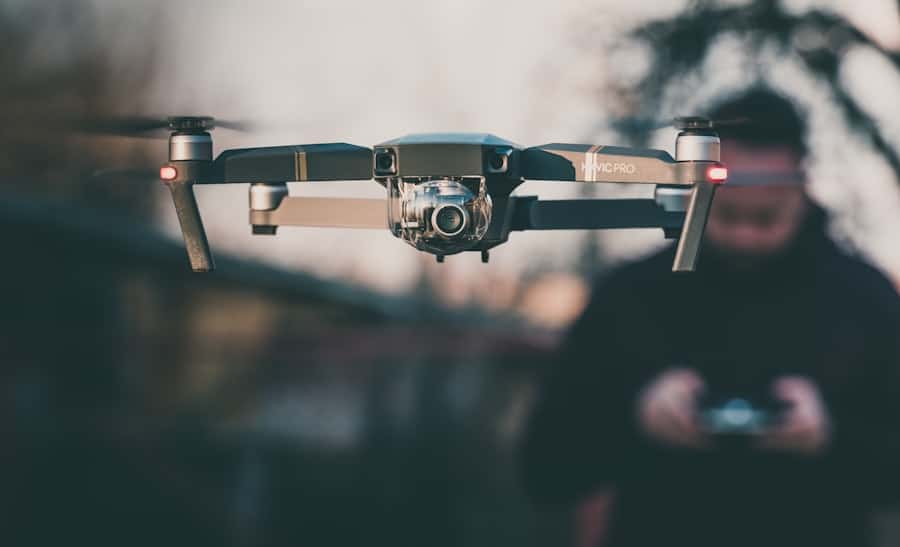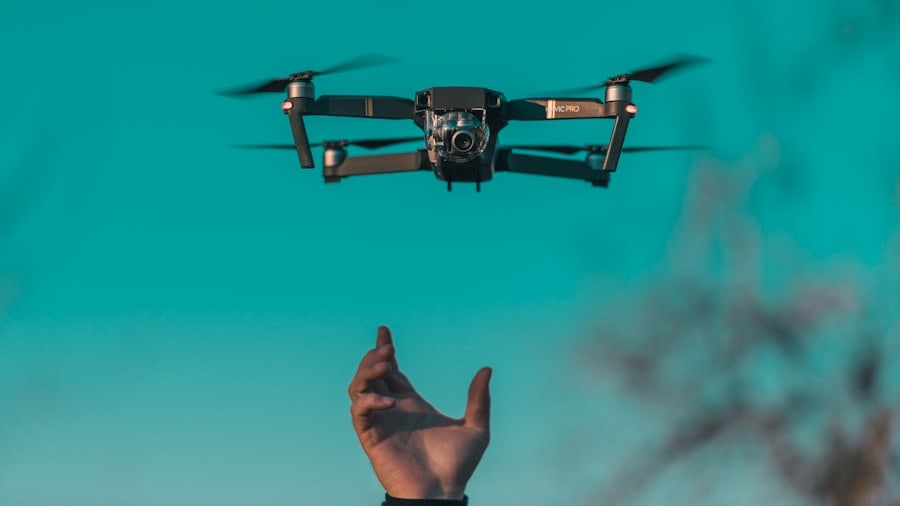The advent of consumer drones has revolutionized the way individuals engage with technology and the world around them. These unmanned aerial vehicles (UAVs) have transitioned from military applications to becoming accessible tools for everyday users, allowing for a myriad of recreational and practical uses. With advancements in technology, including improved battery life, enhanced camera capabilities, and user-friendly interfaces, consumer drones have become increasingly popular among hobbyists and families alike.
The market is now flooded with options ranging from entry-level models to sophisticated devices equipped with high-definition cameras and advanced flight features. As the popularity of consumer drones continues to soar, so does the diversity of their applications. Families are discovering new ways to bond and create lasting memories through shared experiences involving drone flying.
Outdoor enthusiasts are utilizing drones to enhance their adventures, capturing breathtaking landscapes from unique perspectives. Additionally, the rise of drone photography and videography has opened up new avenues for creativity, allowing users to document their lives in ways that were previously unimaginable. However, with this newfound freedom comes the responsibility of understanding safety regulations and the environmental implications of drone usage.
Key Takeaways
- Consumer drones are becoming increasingly popular for recreational use, offering a wide range of benefits for families and individuals.
- Consumer drones can enhance family bonding by providing a fun and engaging activity for all members to participate in.
- Consumer drones are ideal for outdoor activities such as hiking, camping, and beach outings, allowing users to capture stunning aerial views and memories.
- Consumer drones have revolutionized photography and videography, enabling users to capture breathtaking aerial shots and videos from unique perspectives.
- Safety and regulations are crucial when using consumer drones, and it is important for users to be aware of local laws and guidelines to ensure responsible and safe usage.
Consumer Drones and Family Bonding
Flying High Together
Flying a drone together can be an exhilarating activity that encourages teamwork and communication among family members. Whether it’s a weekend outing in a local park or a family vacation at a scenic destination, operating a drone can transform an ordinary day into an adventure filled with excitement.
Learning and Growing Together
Children and parents alike can take turns piloting the drone, learning from each other while developing essential skills such as coordination and spatial awareness. Moreover, the act of capturing aerial footage can serve as a catalyst for storytelling and memory-making. Families can document their outings, creating a visual diary of their adventures that can be revisited for years to come.
Preserving Memories
For instance, a family trip to the beach can be immortalized through stunning aerial shots of the coastline, while a hike in the mountains can be documented from above, showcasing the breathtaking vistas that might otherwise go unnoticed. This shared experience not only strengthens familial bonds but also instills a sense of pride in creating something together that can be cherished long after the moment has passed.
Consumer Drones and Outdoor Activities
The integration of consumer drones into outdoor activities has opened up new dimensions for exploration and enjoyment. Hiking, camping, and biking enthusiasts are increasingly incorporating drones into their adventures, enhancing their experiences by capturing stunning aerial views of landscapes that are often inaccessible from the ground. For example, a mountain biker can use a drone to film their ride down a challenging trail, providing a unique perspective that showcases both their skills and the beauty of nature.
Additionally, drones can assist in scouting locations for outdoor activities. Before embarking on a hiking trip, users can fly their drones over potential trails to assess conditions or discover hidden gems that may not be visible from traditional maps or guides. This capability not only enhances safety by allowing families to evaluate terrain but also adds an element of excitement as they uncover new places to explore.
The ability to survey vast areas quickly makes drones an invaluable tool for outdoor enthusiasts looking to maximize their adventures.
Consumer Drones and Photography/Videography
One of the most significant impacts of consumer drones has been in the realm of photography and videography. The ability to capture high-quality images and videos from an aerial perspective has transformed how individuals document their lives and share experiences with others. Drones equipped with advanced cameras allow users to take stunning shots that were once only possible through expensive equipment or professional services.
This democratization of aerial photography has empowered everyday users to unleash their creativity and produce visually captivating content. For instance, families can create memorable videos of special occasions such as birthdays, weddings, or reunions by incorporating drone footage into their recordings. Aerial shots can add depth and context to these events, showcasing not just the people involved but also the surrounding environment.
Furthermore, social media platforms have become inundated with drone-captured content, allowing users to share their unique perspectives with a global audience. This trend has led to the rise of drone enthusiasts who specialize in creating visually striking content, further fueling interest in consumer drones as tools for artistic expression.
Safety and Regulations for Consumer Drones
As consumer drones become more prevalent, understanding safety protocols and regulations is paramount for responsible usage. Various countries have established guidelines governing drone operation to ensure public safety and privacy protection. In the United States, for example, the Federal Aviation Administration (FAA) mandates that drone operators register their devices if they weigh more than 0.55 pounds.
Additionally, operators must adhere to specific flight rules, such as maintaining visual line-of-sight with the drone and avoiding restricted airspace near airports or military installations. Moreover, safety considerations extend beyond regulatory compliance; they encompass responsible flying practices that protect both users and bystanders. Families should educate themselves about local laws regarding drone usage in public spaces and respect the privacy of others when capturing images or videos.
By fostering a culture of safety and responsibility, families can enjoy the benefits of drone flying while minimizing risks associated with accidents or violations.
Consumer Drones and Educational Opportunities
Consumer drones have also emerged as valuable educational tools that promote learning in various fields. Schools and educational institutions are increasingly incorporating drone technology into their curricula to teach students about science, technology, engineering, and mathematics (STEM).
For instance, students can engage in projects that involve mapping geographical areas using drones equipped with GPS technology. This not only enhances their understanding of geography but also introduces them to concepts related to environmental science and conservation efforts. Furthermore, drone racing has gained popularity as an extracurricular activity in schools, encouraging teamwork and problem-solving skills among participants.
By integrating drones into educational settings, educators can inspire the next generation of innovators while making learning engaging and relevant.
Consumer Drones and Environmental Impact
The environmental implications of consumer drone usage are multifaceted and warrant careful consideration. On one hand, drones can play a significant role in environmental monitoring and conservation efforts. Equipped with sensors and cameras, drones can collect data on wildlife populations, track deforestation rates, or monitor changes in ecosystems due to climate change.
This capability allows researchers and conservationists to gather critical information without disturbing natural habitats or relying on traditional methods that may be time-consuming or invasive. Conversely, there are concerns regarding the environmental impact of increased drone usage among consumers.
Additionally, noise pollution generated by drones can disrupt wildlife habitats and affect animal behavior. As consumer interest in drones continues to grow, it is essential for manufacturers and users alike to prioritize eco-friendly practices, such as recycling old devices and minimizing noise levels during flights.
The Future of Consumer Drones in Family Recreation
The future of consumer drones in family recreation appears promising as technology continues to evolve and integrate into everyday life. As families increasingly embrace these devices for bonding experiences, outdoor adventures, creative expression through photography, and educational opportunities, the potential for enriching family dynamics is immense. With responsible usage guided by safety regulations and environmental considerations, consumer drones can serve as catalysts for memorable experiences that bring families closer together.
As advancements in drone technology continue to unfold—such as improved battery life, enhanced AI capabilities for autonomous flying, and better camera systems—the possibilities for family recreation will expand even further. The integration of augmented reality features could allow families to engage in interactive experiences while flying drones or exploring new environments together. Ultimately, consumer drones have the potential not only to enhance family recreation but also to foster a deeper appreciation for nature and technology among future generations.
In a related article, Discover the Best Free Software for Home Remodeling Today, explores how technology is transforming the way families approach home improvement projects. Just as consumer drones are revolutionizing family recreation, innovative software tools are making it easier for homeowners to plan and execute renovations with precision and efficiency. This article highlights the top software options available for those looking to remodel their homes and create a space that meets their unique needs and preferences.
FAQs
What are consumer drones?
Consumer drones are small, unmanned aerial vehicles that are designed for recreational use by individuals and families. They are equipped with cameras and other features that make them easy to fly and control.
How are consumer drones revolutionizing family recreation?
Consumer drones are revolutionizing family recreation by providing a new and exciting way for families to spend time together outdoors. They can be used for activities such as aerial photography, racing, and exploring new areas, adding a new dimension to family outings and adventures.
What are some popular activities that families can do with consumer drones?
Families can use consumer drones for a variety of activities, including capturing aerial photos and videos of family gatherings and vacations, racing drones against each other, and exploring new areas from a unique perspective.
Are there any safety considerations when using consumer drones for family recreation?
Yes, safety is an important consideration when using consumer drones for family recreation. It’s important to follow all local regulations and guidelines for drone use, and to ensure that all users are properly trained in operating the drones safely.
What are some benefits of using consumer drones for family recreation?
Using consumer drones for family recreation can provide numerous benefits, including promoting outdoor activity and exploration, fostering creativity through aerial photography and videography, and creating new opportunities for bonding and shared experiences among family members.



